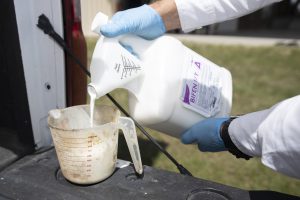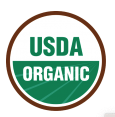Hello Avid Readers! This month there are many events celebrating the big blue sphere we call home, Earth! I thought I would take the opportunity to discuss some chemical options and alternatives that are considered safer for the earth. There is both good and bad information out there, so we should start with some definitions to get on the same page! What are biopesticides, organic, and safer choice chemicals?
Types of Active Ingredient
Pesticides are often categorized into several groups based on their active ingredients. The active ingredient is the part of the pesticide formulation that has activity on or that actually kills the pest. The active ingredient is mixed with inert ingredients to make a pesticide formulation. While the active ingredients will be listed on the label, the inert ingredients are often considered proprietary information and are not listed. Learn more about pesticides in general and active ingredients here.
Conventional

Conventional pesticides are the largest of the groups of active ingredients. This group includes all of our synthetic active ingredients and encompasses anything that is not a biopesticide or antimicrobial. So does being synthetic mean these pesticides are dangerous? No, it just means they have been made in a lab rather than extracted from nature.
For example, chrysanthemums are ornamental flowers that are often planted because they are pretty. These flowers, and others related to them, naturally produce an insecticidal compound called pyrethrin. Scientists have learned to produce compounds very similar to pyrethrin and these are called pyrethroids. The fact that they have been produced in a lab does not make them inherently bad.
Biopesticides
Biopesticides include those pesticides with active ingredients that are naturally derived. From the example above with chrysanthemums this would mean deriving the pyrethrin from the flowers instead of producing it synthetically. This group also includes pesticides made with things like canola oil or baking soda. The EPA describes them in detail here. Does this mean using biopesticides is always safe and better than synthetics? Well all pesticides pose a risk that can be mitigated best by following the label. Using any pesticide in a manner not described on the label is dangerous and illegal. Refer to Dr. Bultemeier’s series on the label for more information on that. However, biopesticides definitely have some Earth-friendly perks over conventional pesticides. According to the EPA:

- “Biopesticides are usually inherently less toxic than conventional pesticides.”
- “Biopesticides generally affect only the target pest and closely related organisms, in contrast to broad spectrum, conventional pesticides that may affect organisms as different as birds, insects and mammals.”
- “Biopesticides often are effective in very small quantities and often decompose quickly, resulting in lower exposures and largely avoiding the pollution problems caused by conventional pesticides.”
- “When used as a component of Integrated Pest Management (IPM) programs, biopesticides can greatly reduce the use of conventional pesticides, while crop yields remain high.”
Antimicrobial
The last major group of pesticides are antimicrobial pesticides. These pesticides are intended to disinfect, sanitize, reduce, or mitigate growth or development of microbiological organisms or protect inanimate objects. The EPA has gone a level further with this group and created a new label, “Safer Choice” for some products. Safer Choice helps consumers, businesses, and purchasers find products that perform and contain ingredients that are safer for human health and the environment.

So What’s Organic?

You might be noticing I haven’t said anything yet about organic. That’s because organic is not a term used to describe active ingredients in pesticides. It is a term from the USDA regarding a system and its final agricultural products. USDA says, “Organic is defined as a system that is managed to respond to site specific conditions by integrating cultural biological and mechanical practices that promote cycling of resources ecological balance, and conserve biodiversity. Synthetic fertilizers, sewage sludge, irradiation and genetic engineering may not be used.”
However, this does not mean organic production is pesticide free production. Pesticides are used in organic production! Actually, one of the biggest misconceptions with organic labeled products is that they are produced without pesticides. This is not true! Generally, the pesticides in the “conventional” or synthetic group we discussed are not allowed to be used in organic production, but there are exceptions to this rule and there are some synthetic substances allowed for use in organic crop production. Pesticides derived from natural resources like biological pesticides can and are used. A list can be found here
What Does This All Mean?
So what does all this mean? How can we be nice to the Earth when we manage pests? Well, as you see above some would say to avoid all synthetic or conventional pesticides. However, I wouldn’t say you need to avoid these entirely. It really depends on the pest you are managing. These types of pesticides can be safe if they are used according to the label and as a part of an integrated pest management program.
However, if there are less toxic or more host specific options then you would want to forego the synthetic and go with the alternative. Some of these alternatives may be biopesticides and the “Safer Choice” line of antimicrobial products. Organic produce as you now know, comes from systems where these alternatives are being used. Keep in mind if you are choosing organic the benefits of the system may be negated if the produce is being heavily packaged and shipped a long way. A final thing to consider is if the amount of produce from organic acreage is significantly different than that of a conventional farm. Historically, organic farming has produced less per acre than conventional. Choosing local produce from an operation using an integrated pest management approach (whether organic or conventional) might be the most sustainable option. There really is a lot to consider!
Click To Subscribe
 1
1
